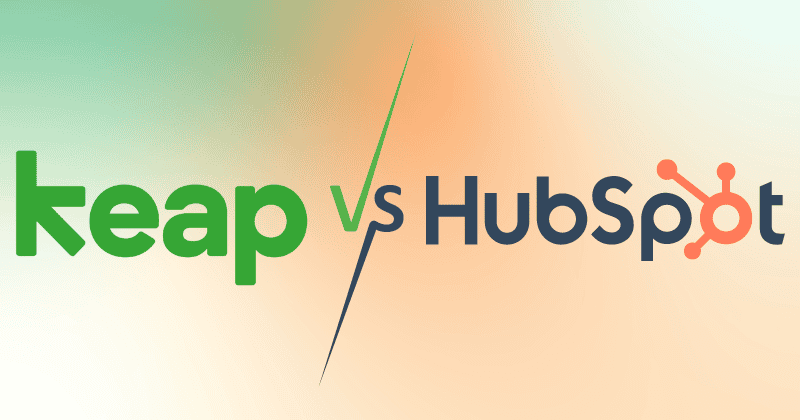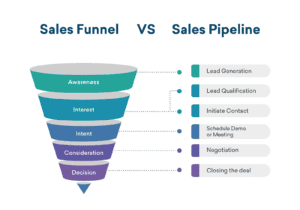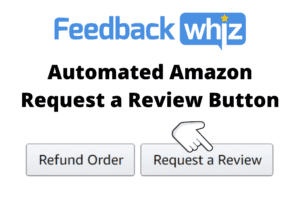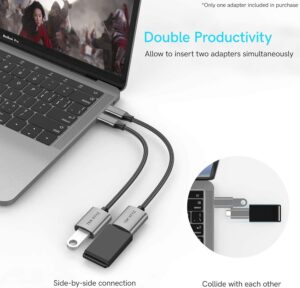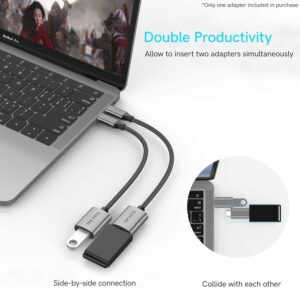Keap vs. HubSpot: Choosing the Right CRM for Small Business Needs
When choosing between Keap and HubSpot for your business, it’s important to consider the unique strengths of each to determine which better aligns with your goals.
Selecting a CRM can be challenging for small business owners, especially when comparing options like Keap and HubSpot. Both platforms offer powerful tools, but each serves specific business types and needs. This article will explore the pros, cons, and primary features of each platform to help you make an informed choice.
Introduction: Why Keap vs. HubSpot?
CRMs have become essential for managing customer relationships and automating business processes. While Keap is known for its simplicity and tailored focus on small businesses, HubSpot offers a wider range of tools that can support businesses of all sizes. The key to making the right choice lies in understanding which platform aligns better with your business goals, technical expertise, and customer engagement needs.
Key Features Comparison: Keap and HubSpot
1. User Experience and Interface
Both Keap and HubSpot offer user-friendly interfaces, but the experience differs based on the complexity of their respective platforms.
- Keap: Offers an intuitive, streamlined interface geared towards small business users who need straightforward tools.
- HubSpot: The interface is highly polished and scalable, but it comes with more complex tools that may be overwhelming for beginners.
2. Contact Management and Segmentation
Effective contact management is the foundation of any CRM, and both Keap and HubSpot provide powerful tools for managing customer data.
- Keap: Focuses on simple contact management with tagging and segmentation options that work well for lead nurturing and email marketing.
- HubSpot: Provides advanced segmentation tools, including custom properties and filters, making it ideal for businesses with large customer bases or those requiring highly detailed data.
3. Automation and Workflow Capabilities
Automation is a primary driver for CRM adoption. Here’s how each platform fares in this area:
- Keap: Known for its powerful but straightforward automation, Keap enables easy follow-up sequences, appointment scheduling, and basic workflows.
- HubSpot: Delivers robust automation options across email marketing, sales workflows, and task management, catering to complex needs with highly customizable workflows.
4. Marketing Tools and Email Campaigns
Email marketing is crucial for engagement, and both platforms provide strong solutions with unique capabilities.
- Keap: Includes a variety of templates and a drag-and-drop editor tailored to small businesses, making email setup straightforward.
- HubSpot: HubSpot’s marketing hub provides advanced email marketing tools, including A/B testing, in-depth analytics, and comprehensive segmentation.
5. Sales Pipeline and Tracking
Managing sales is vital for small businesses aiming to grow, and the right CRM will streamline this process.
- Keap: The visual sales pipeline allows for simple tracking of leads and automated follow-up reminders, keeping small teams efficient.
- HubSpot: Features a comprehensive sales pipeline, complete with deal tracking, customizable stages, and insights to help teams manage larger, more complex pipelines.
Pricing and Value Comparison
Keap Pricing
Keap offers subscription plans that scale based on contacts and features, with options starting for as low as $129 per month. Its pricing structure is designed for small businesses looking for essential CRM functions without high costs.
HubSpot Pricing
HubSpot’s CRM platform is free, but many advanced features, especially for marketing and sales automation, require premium subscriptions. Paid plans start around $45 per month for smaller features but can go up significantly for advanced functionalities.
Integration Capabilities: Keap and HubSpot
Integrations enhance CRM functionality by connecting other tools essential for business operations.
- Keap: Integrates seamlessly with several popular applications like QuickBooks, Zapier, and Gmail, allowing small businesses to create a cohesive tech stack.
- HubSpot: HubSpot boasts an extensive integrations directory, including connections to Google Workspace, Shopify, Salesforce, and various email tools, making it suitable for larger or multi-faceted operations.
Pros and Cons of Each Platform
Keap Pros
- Ideal for small businesses with basic CRM needs.
- Simple interface with essential tools for contact management and sales automation.
- Effective for service-based businesses with a high need for appointment scheduling and follow-ups.
Keap Cons
- Limited flexibility in advanced marketing and sales functions.
- Fewer integrations than HubSpot, potentially limiting scalability.
HubSpot Pros
- Extensive features in marketing, sales, and customer support.
- Free CRM option provides a range of basic functionalities.
- Scalable, ideal for businesses planning to expand in the future.
HubSpot Cons
- The pricing structure for advanced tools can be costly.
- More complex interface, requiring a steeper learning curve.
When to Choose Keap Over HubSpot
Choose Keap if your small business requires simplicity and automation in lead management, appointment scheduling, and invoicing. Keap is best suited for service-based businesses or those with limited tech resources, allowing you to benefit from essential CRM functions without unnecessary complexity.
When to Choose HubSpot Over Keap
HubSpot is the better option if you’re looking for a comprehensive platform that will grow with your business. If you need in-depth marketing analytics, scalable automation workflows, and the ability to manage large customer databases, HubSpot’s features offer great long-term value.
Real-World Scenarios: Keap vs. HubSpot
- E-commerce Startups: A small e-commerce business may find Keap effective for email campaigns and basic customer follow-ups. However, as the business grows and marketing demands increase, transitioning to HubSpot could provide more robust marketing and sales tools.
- Consulting Firms: Small consulting firms focused on client relationships and billing can benefit from Keap’s automation and invoicing features. Conversely, a growing consultancy with diverse client needs may prefer HubSpot’s advanced segmentation and data customization.
FAQs
Which CRM is easier to use, Keap or HubSpot?
Keap is generally easier for beginners, offering a streamlined experience focused on essential CRM functions. HubSpot is more complex but offers greater flexibility for those needing advanced features.
Is HubSpot’s free plan enough for small businesses?
HubSpot’s free CRM is a great starting point, but small businesses may quickly outgrow it and need to invest in a premium plan for marketing automation and analytics.
Do Keap and HubSpot offer mobile apps?
Yes, both Keap and HubSpot offer mobile applications that allow business owners to manage tasks and stay connected with customers on the go.
Which CRM is better for email marketing?
HubSpot provides more robust tools for email marketing, including A/B testing and advanced personalization options. However, Keap is also effective for businesses focused on straightforward email campaigns.
How does pricing compare between Keap and HubSpot?
Keap’s pricing is generally more affordable for small businesses, whereas HubSpot’s premium plans provide greater functionality but come at a higher price.
Top Tools to Simplify and Scale Your Business
- Keap: Simple CRM with automated lead management, invoicing, and email campaigns tailored for small businesses.
- HubSpot: Comprehensive CRM with extensive sales, marketing, and service tools designed for scalability.
- Zapier: Integrates with both CRMs, automating workflows across various applications.
- ActiveCampaign: Email marketing and automation tool with strong CRM features, suitable for businesses needing advanced email solutions.
- Monday.com: Project management software that integrates with CRMs, ideal for collaborative and team-based projects.
Keywords: Keap vs HubSpot, CRM comparison, small business CRM, HubSpot alternatives, Keap features, CRM pricing, CRM automation

